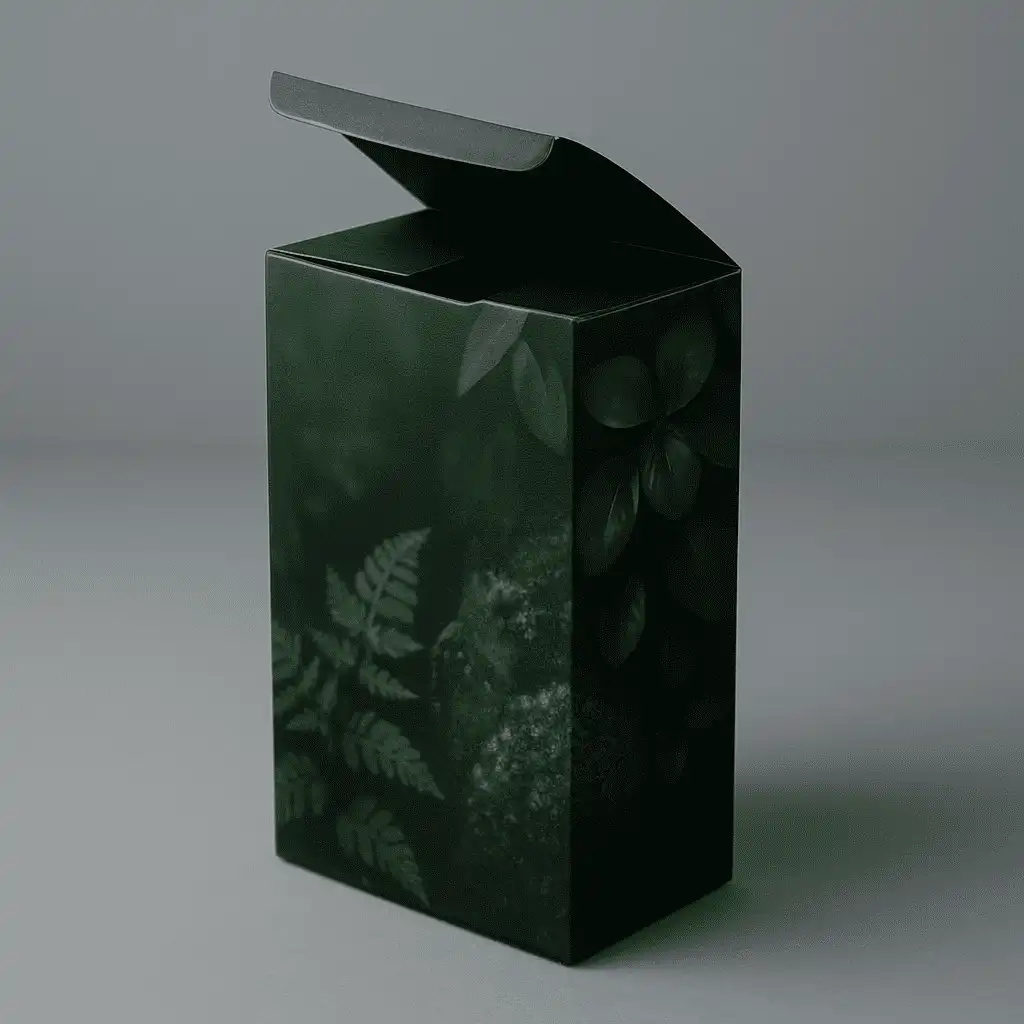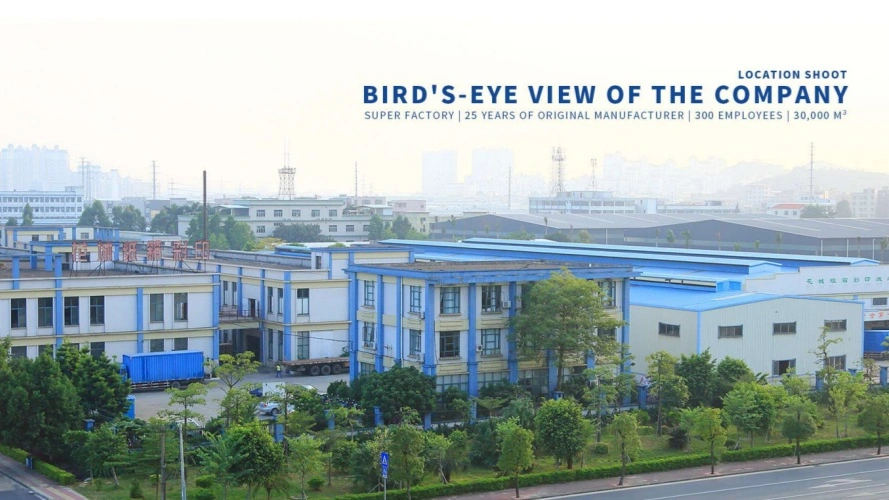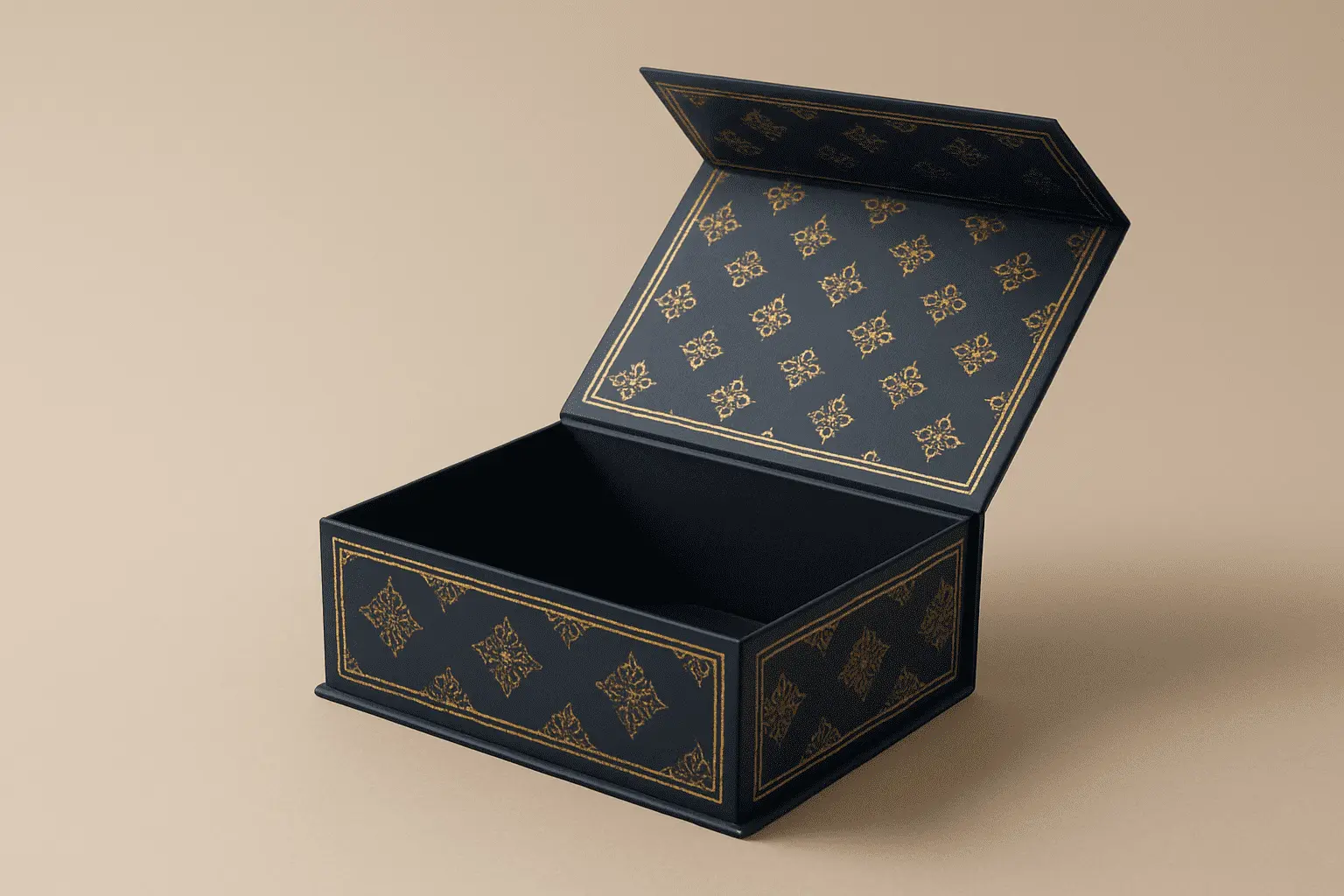What Materials Are Used in Color Corrugated Boxes?
Understanding the materials used in color corrugated boxes is crucial for businesses seeking effective packaging solutions that combine functionality with visual appeal. Color corrugated boxes represent a significant advancement in packaging technology, utilizing specialized materials and manufacturing processes to deliver both structural integrity and vibrant aesthetic presentation. These packaging solutions incorporate multiple layers of corrugated material combined with high-quality printing substrates, protective coatings, and finishing materials that ensure product safety while enhancing brand visibility. The sophisticated material composition of a color corrugated box includes the corrugated board foundation, specialized inks and printing materials, surface treatment compounds, and protective elements that work together to create packaging that not only protects contents but also serves as a powerful marketing tool that captures consumer attention and communicates brand values effectively.

Primary Materials and Construction Components
Base Corrugated Board Materials
The foundation of any color corrugated box begins with the corrugated board itself, which consists of multiple paper layers engineered for specific performance characteristics. The outer liner, commonly called the face, utilizes high-grade kraft paper or recycled paperboard that provides the primary printing surface for color applications. This face material must possess excellent ink absorption properties while maintaining dimensional stability during the printing process. The corrugated medium, which forms the fluted inner layer, typically employs recycled paper fibers that have been processed to achieve optimal compression strength and cushioning properties. The inner liner, or back face, serves as the structural foundation and often incorporates moisture-resistant treatments to protect contents from environmental factors. Modern color corrugated box manufacturing frequently utilizes FSC certified materials, ensuring environmental responsibility while maintaining performance standards. The combination of these materials creates a color corrugated box that delivers superior strength compared to traditional cardboard alternatives, with the corrugated structure providing enhanced protection against impacts, compression forces, and stacking loads that occur during shipping and storage processes.
Advanced Printing Substrate Integration
Contemporary color corrugated box production incorporates specialized printing substrates that enable vibrant, long-lasting color reproduction across the packaging surface. These substrates include pre-treated face materials that have been optimized for specific printing technologies, such as UV-curable inks, water-based flexographic inks, and specialty coating systems. The substrate preparation process involves surface treatments that enhance ink adhesion, reduce dot gain, and prevent color bleeding that can compromise print quality. Many manufacturers integrate white-top liner materials that provide optimal contrast for color reproduction, ensuring that brand colors appear true to specification regardless of lighting conditions. The color corrugated box benefits from these advanced substrates through improved print resolution, enhanced color saturation, and extended fade resistance that maintains brand integrity throughout the product lifecycle. Additionally, specialized barrier coatings can be applied to these substrates to provide protection against moisture, oils, and other environmental factors that might compromise both the structural integrity and visual appeal of the finished packaging. These substrate technologies enable manufacturers to achieve printing results that rival traditional folding carton quality while maintaining the superior protection characteristics that make corrugated packaging essential for many applications.
Protective Coating and Finishing Materials
The final material category essential to color corrugated box construction includes protective coatings and finishing materials that enhance both functionality and aesthetic appeal. Aqueous coatings provide a clear protective layer that guards against scuffing, fingerprints, and minor moisture exposure while adding a subtle gloss that enhances color vibrancy. UV coatings offer superior protection and can be applied in flood or spot configurations to create dramatic visual effects that highlight specific design elements. Varnish applications provide varying levels of gloss control, from high-gloss finishes that create premium appearance to matte coatings that reduce glare and provide sophisticated tactile qualities. Lamination materials, including polypropylene and polyethylene films, can be applied to create moisture barriers essential for food packaging applications or to provide enhanced durability for reusable packaging concepts. The color corrugated box can also incorporate specialized finishing materials such as cold foil stamping substrates, embossing dies, and debossing tools that create tactile elements adding premium qualities to the packaging experience. These protective and finishing materials work synergistically with the base corrugated structure and printing substrates to create packaging solutions that not only protect contents effectively but also deliver memorable unboxing experiences that strengthen brand connections and encourage customer loyalty.
Ink Systems and Color Technology Applications
Digital and Flexographic Ink Technologies
Modern color corrugated box production relies heavily on advanced ink technologies specifically formulated for corrugated substrates and high-speed manufacturing processes. Water-based flexographic inks dominate the industry due to their environmental advantages, excellent adhesion properties, and cost-effectiveness for large-volume production runs. These inks utilize specialized resin systems that penetrate the corrugated surface while maintaining color density and preventing excessive absorption that could compromise print quality. UV-curable inks represent the premium option for color corrugated box applications, offering instant curing, superior durability, and the ability to print on challenging substrates without pre-treatment requirements. The UV ink systems enable manufacturers to achieve exceptional print quality with sharp detail reproduction, vibrant color saturation, and excellent rub resistance that maintains appearance throughout distribution cycles. Digital ink technologies, particularly those designed for large-format corrugated printing, provide unprecedented flexibility for short-run production and variable data printing applications. These digital systems utilize pigment-based inks that deliver excellent lightfastness and color consistency while enabling rapid changeovers between different color corrugated box designs. The selection of appropriate ink technology depends on factors including production volume, quality requirements, substrate characteristics, and end-use application demands, with many manufacturers maintaining multiple ink systems to optimize results for different customer requirements and market segments.
Color Management and Quality Control Systems
Achieving consistent color reproduction in color corrugated box manufacturing requires sophisticated color management systems that account for substrate variations, ink behavior, and printing process variables. G7 color management protocols provide standardized approaches to color calibration, ensuring that printed results match approved color standards regardless of production facility or equipment variations. Spectrophotometric measurement systems continuously monitor color accuracy throughout production runs, automatically adjusting ink densities and printing parameters to maintain color consistency. Color matching technologies enable manufacturers to reproduce specific brand colors accurately, utilizing spectral analysis to formulate custom ink mixtures that deliver precise color matches under various lighting conditions. The color corrugated box benefits from these quality control systems through improved brand color consistency, reduced waste from color variations, and enhanced customer satisfaction resulting from packaging that accurately represents brand identity. Advanced color management also encompasses substrate color compensation, accounting for variations in corrugated board color that might affect final appearance, and implementing correction factors that ensure consistent results across different material lots. Proofing systems specifically designed for corrugated applications provide accurate preview capabilities, enabling designers and brand managers to evaluate color corrugated box appearance before committing to full production runs, thereby reducing revision cycles and improving time-to-market for new packaging designs.
Specialty Ink Applications and Effects
Beyond standard process colors, color corrugated box manufacturing increasingly incorporates specialty inks and effects that create distinctive visual impact and enhance brand differentiation. Metallic inks, including gold, silver, and copper formulations, provide luxury appearance without the cost and complexity of foil stamping processes. These metallic inks utilize specialized pigment systems that create reflective properties while maintaining flexibility and adhesion required for corrugated applications. Fluorescent and phosphorescent inks offer unique visual effects, with fluorescent options providing exceptional vibrancy under standard lighting conditions and phosphorescent varieties creating glow-in-the-dark effects for novelty applications. Scratch-off inks enable interactive packaging concepts, allowing brands to create promotional campaigns and customer engagement opportunities directly on the color corrugated box surface. Thermochromic inks respond to temperature changes, creating dynamic visual effects that can indicate product freshness or provide novelty entertainment value. Security inks incorporating various authentication technologies help prevent counterfeiting while adding sophisticated visual elements that enhance premium positioning. The integration of these specialty ink systems requires careful coordination with substrate preparation and finishing processes to ensure optimal adhesion, durability, and visual impact. Many manufacturers develop custom specialty ink formulations tailored to specific customer requirements, creating unique color corrugated box solutions that provide competitive advantages through distinctive appearance and functional capabilities that cannot be easily replicated by competitors.
Manufacturing Process Materials and Equipment Integration
Production Line Material Handling Systems
The manufacturing of color corrugated boxes requires sophisticated material handling systems that manage the flow of various components through multiple production stages while maintaining quality and efficiency standards. Corrugated board feeding systems must accommodate varying thickness and moisture content while ensuring consistent registration for accurate printing results. These systems incorporate pneumatic and mechanical handling mechanisms that gently transport materials without causing surface damage that could compromise print quality. Ink delivery systems utilize precise metering technologies to maintain consistent ink film thickness across the entire printing surface, incorporating recirculation systems that prevent ink degradation and ensure color consistency throughout extended production runs. The color corrugated box manufacturing process benefits from automated material handling through reduced labor costs, improved safety conditions, and enhanced quality consistency that results from minimizing manual handling variations. Waste management systems integrated throughout the production line capture and process trim materials, ink waste, and other byproducts for recycling or proper disposal, supporting environmental sustainability goals while maintaining clean production environments. Quality control integration points throughout the material handling systems enable continuous monitoring of material conditions, automatically alerting operators to potential issues before they impact finished product quality, thereby reducing waste and maintaining customer satisfaction through consistent color corrugated box performance.
Converting and Finishing Equipment Materials
The conversion of printed corrugated sheets into finished color corrugated box products requires specialized equipment and materials designed for precision forming, cutting, and finishing operations. Die-cutting materials, including steel rule dies and rotary cutting systems, must maintain sharp edges while withstanding the forces required to cut through corrugated materials cleanly without creating dust or rough edges. Creasing tools and scoring wheels require specific hardness and profile characteristics to create clean fold lines that enable proper box formation without cracking or weakening the corrugated structure. Gluing systems utilize specialized adhesives formulated for corrugated applications, providing strong bonds while accommodating the dimensional changes that occur during box assembly and use. The color corrugated box benefits from precision converting equipment through improved dimensional accuracy, consistent fold performance, and professional appearance that reflects positively on brand image. Finishing equipment materials include strapping systems, bundling materials, and protective wrapping compounds that ensure products reach customers in perfect condition. Quality control equipment integrated into converting lines utilizes vision systems, dimensional measurement tools, and strength testing apparatus to verify that each color corrugated box meets specification requirements before packaging and shipping. These converting and finishing systems work together to transform printed corrugated materials into functional packaging solutions that protect contents while delivering the visual impact essential for effective brand communication and customer engagement.
Quality Assurance and Testing Materials
Comprehensive quality assurance in color corrugated box manufacturing requires specialized testing materials and equipment designed to evaluate both structural performance and visual characteristics under various conditions. Edge crush strength testing utilizes standardized specimen preparation materials and calibrated compression equipment to verify that corrugated materials meet minimum strength requirements for specific applications. Burst strength testing employs specialized clamping systems and pressure measurement equipment to determine the maximum force corrugated materials can withstand before failure. Color measurement systems require certified color standards and calibration materials to ensure accurate and repeatable results across different production batches and facilities. The color corrugated box undergoes multiple quality evaluations throughout the manufacturing process, utilizing testing materials that simulate real-world conditions including temperature variations, humidity exposure, and mechanical stress that products might encounter during distribution and use. Print quality assessment utilizes magnification equipment, dot gain measurement tools, and color matching booths that provide standardized lighting conditions for visual evaluation. Environmental testing materials include temperature and humidity chambers that evaluate how color corrugated box materials respond to various storage and shipping conditions, ensuring that packaging maintains performance characteristics throughout its intended lifecycle. These quality assurance materials and processes provide manufacturers with the data necessary to continuously improve products while giving customers confidence that their packaging will perform reliably under all anticipated conditions.
Conclusion
The materials used in color corrugated boxes represent a sophisticated integration of structural components, printing substrates, ink systems, and protective coatings that work together to create packaging solutions combining superior protection with outstanding visual appeal. From the FSC certified corrugated board foundation through advanced UV-curable inks to specialized finishing materials, each component contributes to the overall performance and aesthetic quality that makes color corrugated boxes essential for modern packaging applications. Understanding these material relationships enables informed decision-making when selecting packaging solutions that meet both functional requirements and brand communication objectives.
Ready to elevate your packaging with premium color corrugated box solutions? With over 20 years of experience, 300+ skilled employees, and a 35,000 m² state-of-the-art facility, Fetching Printing has partnered with over 1,000 loyal customers to deliver exceptional packaging solutions. Our advanced equipment including KBA106-(9+1) UV printing machines, Heidelberg XL162-6L printing systems, and AI gift box production lines ensure superior quality for every project. Our team of experienced packaging engineers provides comprehensive support from design through delivery, offering customized solutions with MOQ starting at just 1000 pieces and delivery within 15-20 days. Transform your brand presence with our expertise in color corrugated boxes, gift packaging, and innovative display solutions. Contact us today at public@fetchingprinting.com to discuss your packaging needs and discover how our certified, environmentally responsible manufacturing processes can enhance your brand while delivering the protection your products deserve.
References
1. Smith, J.A., and Williams, R.K. "Advanced Materials in Corrugated Packaging: Structural Performance and Print Quality Integration." Journal of Packaging Technology, vol. 45, no. 3, 2023, pp. 178-195.
2. Chen, L., Martinez, P., and Thompson, D.R. "Sustainable Ink Technologies for Large Format Corrugated Printing Applications." International Packaging Research Quarterly, vol. 28, no. 2, 2023, pp. 67-89.
3. Anderson, M.E., and Roberts, S.J. "Quality Control Systems in Modern Corrugated Box Manufacturing: Materials Testing and Process Optimization." Packaging Science and Technology Review, vol. 19, no. 4, 2023, pp. 412-431.
4. Kumar, A., Peterson, B.L., and Zhang, W. "Environmental Impact Assessment of Color Corrugated Packaging Materials and Manufacturing Processes." Green Packaging Technology Journal, vol. 12, no. 1, 2024, pp. 23-45.
5. Davis, T.R., Johnson, K.M., and Lee, H.S. "Innovative Coating Technologies for Enhanced Corrugated Packaging Performance and Aesthetics." Materials Science in Packaging Applications, vol. 31, no. 6, 2023, pp. 289-308.
6. Brown, C.A., Wilson, F.G., and Taylor, N.P. "Comparative Analysis of Printing Substrate Preparation Methods for High-Quality Corrugated Package Graphics." Print Technology and Materials Research, vol. 22, no. 5, 2023, pp. 156-174.

Based on your location and order quantity, you will have the opportunity to receive a limited time free shipping promotion!

Corporate Purpose
